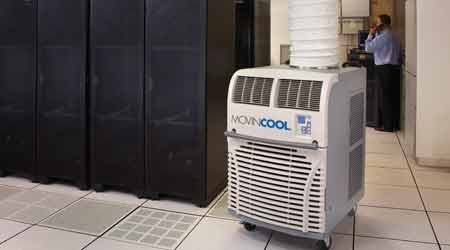 Managers can purchase or rent relativly low-cost temporary colling systems ranging from small, self-comtained units to cool one area, to trailer-mounted units that can cool entire buildings.
Managers can purchase or rent relativly low-cost temporary colling systems ranging from small, self-comtained units to cool one area, to trailer-mounted units that can cool entire buildings.HVAC: Temporary Cooling, Rent or Buy?
Depending on the facility's cooling needs, managers have an array of options in either purchasing or renting temporary cooling.
Part three of a four part series.
Size matters
Depending on the cooling needs for the application, managers have a range of options in selecting temporary systems for purchase or rental. For smaller spaces, the most commonly used temporary systems are self-contained units that can be rolled into place. These units run on 120 volts or 240 volts and offer cooling capacities of up to 5 tons. They use a flexible duct to direct the cooling air where it is needed. A second flexible duct removes heat from the unit out of the space, typically through a window into an adjacent, unoccupied space.
Larger self-contained units and split systems are available with capacities of up to 100 tons. Too large to be placed in or adjacent to the space being conditioned, these air cooled units typically are placed outside the facility. Flexible ducts supply the conditioned air to the various spaces within the facility.
Managers can use even larger, trailer-mounted units to cool large sections of, or entire buildings. These units are self-contained and include a chiller, circulation pumps, and an air-cooled condensing unit. Some are configured with a generator that supplies power to the system.
Managers looking at cooling system options must consider a number of installation and operation factors, including temporary piping, connections to existing building utility systems, the way the conditioned air will be distributed to building spaces, the power requirements of the temporary system, and the system’s location. Larger units, particularly those placed outside the facility, take up a great deal of space and can produce significant levels of noise and vibrations.
HVAC renovation projects are difficult enough on their own. They do not need complications arising from inadequate planning for temporary cooling. By following these steps, and carefully planning the process, managers can avoid many of the crisis management issues that tend to crop up in any major renovation project.
James Piper, P.E., is a national facilities consultant based in Bowie, Md. He has more than 30 years of experience with facilities maintenance, engineering and management issues.
Related Topics:















